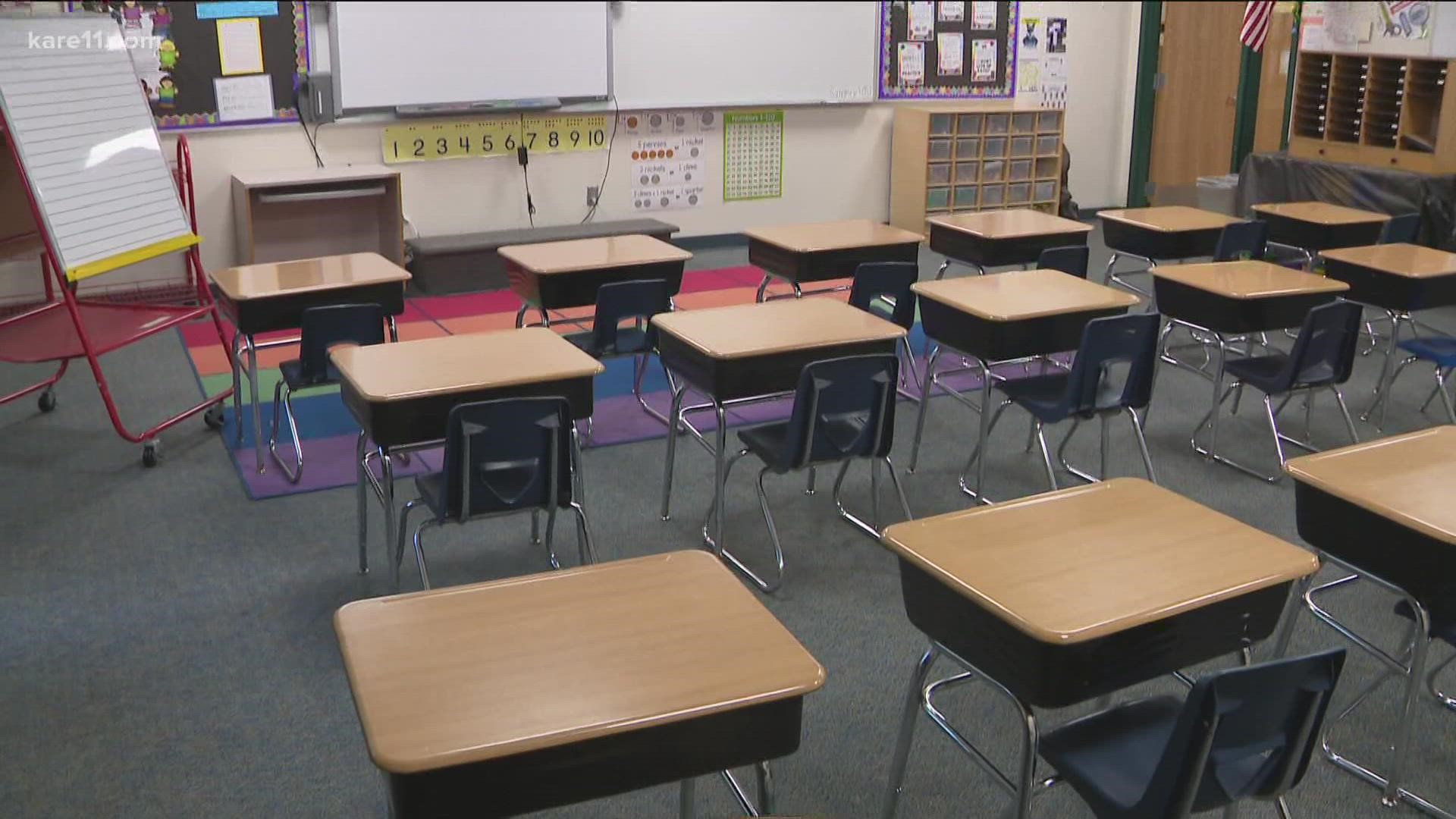There's no doubt COVID-19 has made a lot of industries more challenging, especially education. In fact, teachers and school board members are calling it quits in concerning numbers.
Scenes of altercations from outside Nashville, Tennessee to Provo, Utah and even this past week in Eastern Carver County, are playing out publicly at some school board meetings.
The hostile meetings are, in part, leading to more resignations, according to Minnesota's School Board Association that trains and advocates for its members.
Its Executive Director Kirk Schneidawind says, "By in large, most of our folks have felt, 'This wasn't what I signed up for, this isn't what I got elected for.'"
There are 2,200 school board members in Minnesota. They are usually volunteers. Their meetings, while public, are not public hearings.
"They're trying to balance those needs from the community engagement side, as well as getting the work done for our community schools," explained Schneidawind.
Near Rochester, the Byron School Board decided to recommend masking in schools, not require them, like then-member Mike Denney supported. That, in part, caused him to recently quit the board telling KARE 11 he was threatened online and in-person.
"The incivility has been a big concern of ours," said Schneidawind.
Schneidawind says there have been 64 resignations across the state between August 2020 and August 2021. In that same time the year before, there were just 15. Some of the openings were because members died in office, took another job or moved, but most resigned.
The turbulent year is also taking a toll on teachers.
"They said, we can't handle this, it's too much for them," said Alex Liuzzi with Minnesota's Licensing and Standards Board that tracks teacher licenses. "Specifically teachers nearing retirement are leaving."
The longtime shortage is being amplified by the pandemic.
"We think in the next year or two, that shortage that's been a crisis for at least five years will be at whatever the next step beyond crisis would be," said Liuzzi.
Liuzzi says the latest data shows about 114,000 people have a teaching license. But less than half are using it and they have may have they retired, moved into administrative roles or private schools.
"But still, when you take out all of those populations, we have to assume there's still at least 20,000 individuals that have chosen, for some reason or another, that teaching wasn't for them," explained Liuzzi.
That is more than enough, says Liuzzi, to fill the some 6,000 positions that are now available.
"We want to make sure teachers have the proper license, and are qualified to be teaching our kids," said ISD-728 Superintendent Daniel Bittman.
He oversees 14,000 students and being the state's eighth largest district doesn't come without some difficulties.
"Like other school districts, there are certain areas that are more difficult to fill now more than ever," said Bittman, including special education, art and music departments, along with finding bus drivers.
Even superintendents aren't sticking around.
"Very different job navigating through a pandemic in this day and age than what most superintendents would sign up for, similarly to teaching," said Bittman.
On top of that, 50% of licensed teachers leave within five years.
"Again, we have enough people that want to do it, we just need to provide them the supports that they want to stay in the classroom," said Liuzzi.
To start the Minnesota Legislature recently approved a $3 million teacher mentorship grant and there's a bill to help schools hire and retain more teachers of color.
Advocates also want to increase teacher prep programs.
As for the open school board positions, Schneidawind doesn't expect it will be hard to fill them saying, during a public health crisis, the job may be more important now than ever.

